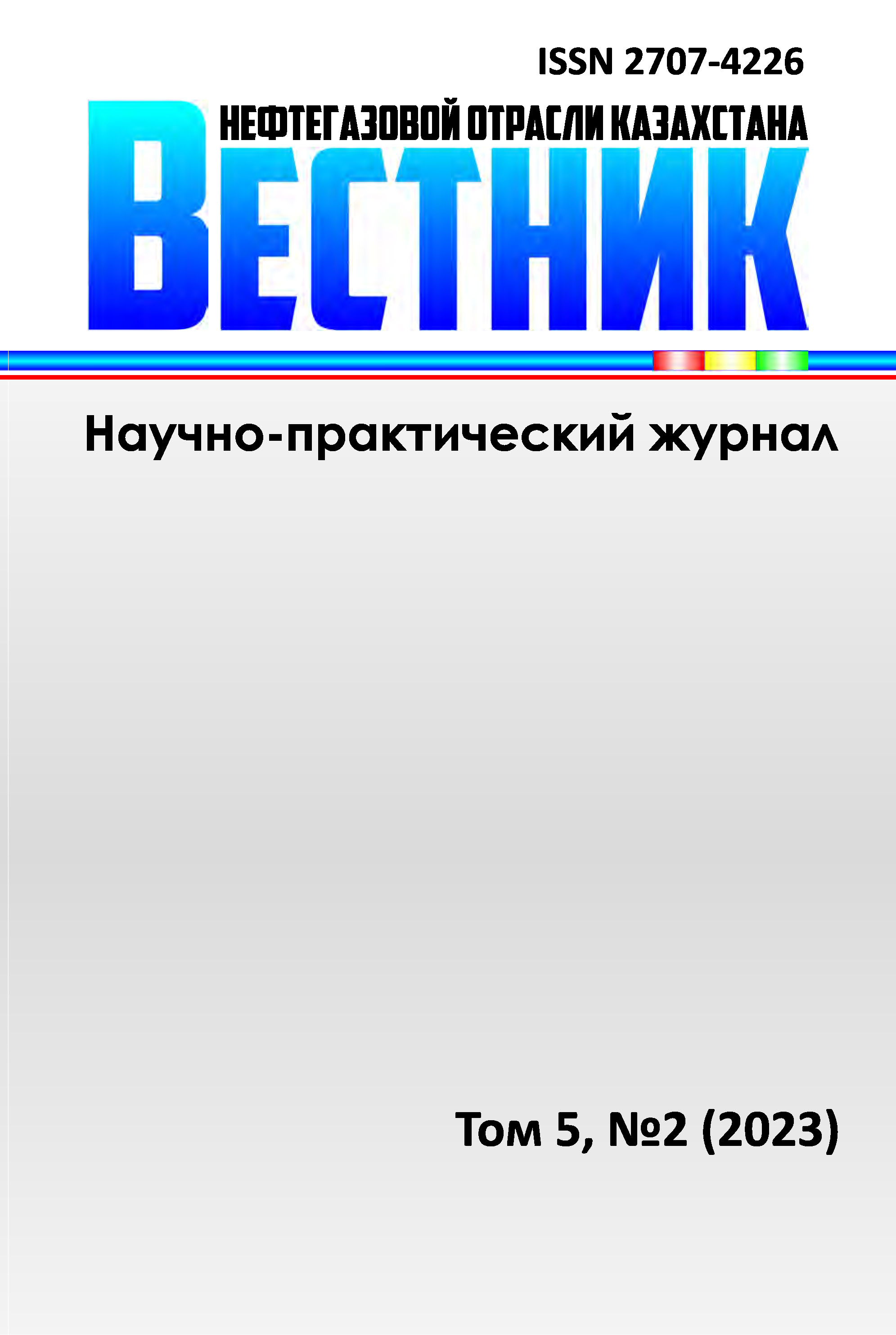Hydraulic fracturing using high-boiling fraction of oil as a fracturing fluid
- Authors: Mashrapova M.A.1, Tileuberdi N.1, Abdeli D.Z.2, Ozdoyev S.M.1, Iskak A.S.2
-
Affiliations:
- Institute of geological sciences of K.I. Satpayev
- Satbayev University
- Issue: Vol 5, No 2 (2023)
- Pages: 69-80
- Section: Oil and gas field development and exploitation
- URL: https://vestnik-ngo.kz/2707-4226/article/view/108652
- DOI: https://doi.org/10.54859/kjogi108652
- ID: 108652
Cite item
Full Text
Abstract
Background: In recent years, there has been a trend towards deterioration in the structure of residual reserves at the fields of Kazakhstan. A significant part of the reserves is located in low-permeability reservoirs and in the zones not covered by flooding. The main factor negatively affecting the productivity and efficiency of development is the heterogeneity of oil reservoirs.
Oil-saturated formations are an alternation of permeable oil-saturated sand or limestone and impermeable clay or dolomite layers, lenses and interlayers. Up to 10–20 interlayers can be distinguished within the reservoir, which indicates a strong compartmentalization of the reservoirs. Due to the complexity of the structure of oil deposits, it is very difficult or impossible to ensure complete drainage of the entire volume of the deposit and complete coverage of oil displacement by water into production wells through injection wells.
Aim: Increasing oil recovery in a cost-effective way.
Materials and methods: Experimental studies of the processes of impact on the bottomhole formation zone with high-boiling oil components were carried out using a laboratory machine for diamond drilling, an installation for determining the permeability of a rock in terms of liquid and gas, an installation for determining oil viscosity, and an installation for pumping fracturing fluid into the reservoir model.
Results: As a result of applying the hydraulic fracturing method using high-boiling oil components, it is possible to increase the permeability of low-permeability formations and significantly increase oil recovery.
Conclusion: Due to the geological structure of multi-layer oilfields, water-based gel fracturing fluids to increase oil flow to wells are considered ineffective due to the adsorption of gels with long molecules in the pores of the formation and swelling of the clay particles of the reservoir when they interact with the water-based fluid.
About the authors
Moldir A. Mashrapova
Institute of geological sciences of K.I. Satpayev
Author for correspondence.
Email: moldir_m_m@mail.ru
ORCID iD: 0000-0002-6009-9730
Scopus Author ID: 56721302700
ResearcherId: AAD-4825-2020
PhD
Kazakhstan, AlmatyNurbol Tileuberdi
Institute of geological sciences of K.I. Satpayev
Email: nureke-17@mail.ru
ORCID iD: 0000-0003-0781-2434
Scopus Author ID: 57195378526
PhD
Kazakhstan, AlmatyDairabay Zhumadiluly Abdeli
Satbayev University
Email: d.abdeli@mail.ru
Scopus Author ID: 57200382346
D. Sc. (Engineering)
Kazakhstan, AlmatySultan M. Ozdoyev
Institute of geological sciences of K.I. Satpayev
Email: ozdoyevsultan@mail.ru
ORCID iD: 0000-0003-0262-1583
Scopus Author ID: 57195382978
D. Sc. (Geology and Mineralogy)
Kazakhstan, AlmatyArdak S. Iskak
Satbayev University
Email: a.yskak@satbayev.university
Scopus Author ID: 56826148100
PhD
Kazakhstan, AlmatyReferences
- Magadova LA. Razrabotka zhidkostey razryva na vodnoy i uglevodorodnoy osnovakh i tekhnologiy ikh primeneniya dlya sovershenstvovaniya protsessa gidravlicheskogo razryva plasta [dissertation]. Moscow; 2007. Available from: https://www.dissercat.com/content/razrabotka-zhidkostei-razryva-na-vodnoi-i-uglevodorodnoi-osnovakh-i-tekhnologii-ikh-primenen. (In Russ).
- Elgassier MM, Stolyarov SM. Reasons for Oil-Based Hydraulic Fracturing in Western Siberia. SPE International Symposium and Exhibition on Formation Damage Control held in Lafayette; 2008 Feb 13–15; Lousiana, U.S.A. Available from: https://onepetro.org/SPEFD/proceedings-abstract/08FD/All-08FD/SPE-112092-MS/145829.
- Baimakhanov GA, Mashrapova MA, Tileuberdi N. Study of hydraulic fracturing. Materials of the XI international scientific and practical conference «Science without borders»; Technical Sciences, Volume 24, March 30 – April 7, 2015. Sheffield, England. http://www.rusnauka.com/13_NBG_2015/Tecnic/10_191463.doc.htm
- Magadova LA, Mikhailov SA, Magadov VR. Study of the long-term conductivity of proppants from various manufacturers. Scientific and technical report. Gubkin University. Moscow, 2011.
- Melikbekov AS. Theory and practice of hydraulic fracturing. Moscow: Nedra; 1967.
- Ozdoyev SM, Mashrapova MA. Enhanced oil recovery of the productive horizons of the Arystanovskoye field. Scientific and technical journal "Oil and Gas". 2017;6(102):88–96.
- Abdeli DJ, Ozdoyev SM, Kontorovich AE, Mashrapova MA. Study of the method of hydraulic fracturing of layers in laboratory conditions. Bulletin of KazNRTU. 2019;1(131):207–212.
- Baimakhanov G, Koishybaev A, Mashrapova MA, Tileuberdi N. Highly pressurized hydraulic fracturing fluid behavior in oil-bearing rocks. Int. J. Chem. Sci. 2015;13(2):963–970.
- Akhmetov SA. Technology of deep processing of oil and gas. Ufa: Ed. "Guilem", 2002.
- Ozdoyev SM, Mashrapova MA. Geological structure and methods of increasing oil recovery of the productive horizons of the Аrystan deposit. News of National Academy of Sciences of the Republic of Kazakhstan. Series of geology and technical sciences. 2017;4(424):270–275.
- Mashrapova MA, Zholtayev GZ, Abdeli DZ, et al. Improvement of hydraulic facing method to increase wells productivity. News of the National Academy of Sciences of the Republic of Kazakhstan, Series of Geology and Technical Sciences. 2021;4(448): 124–129.
Supplementary files

















